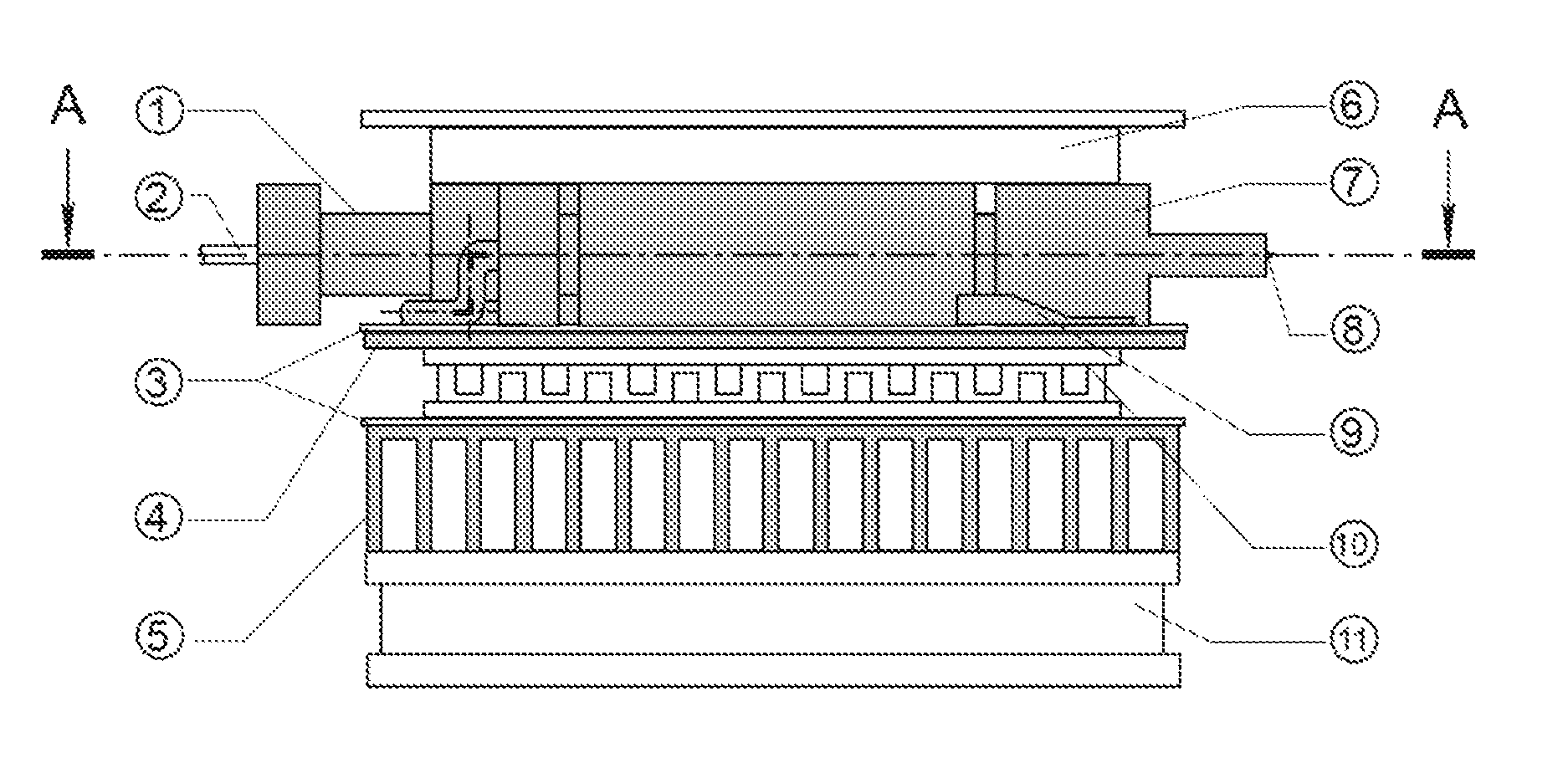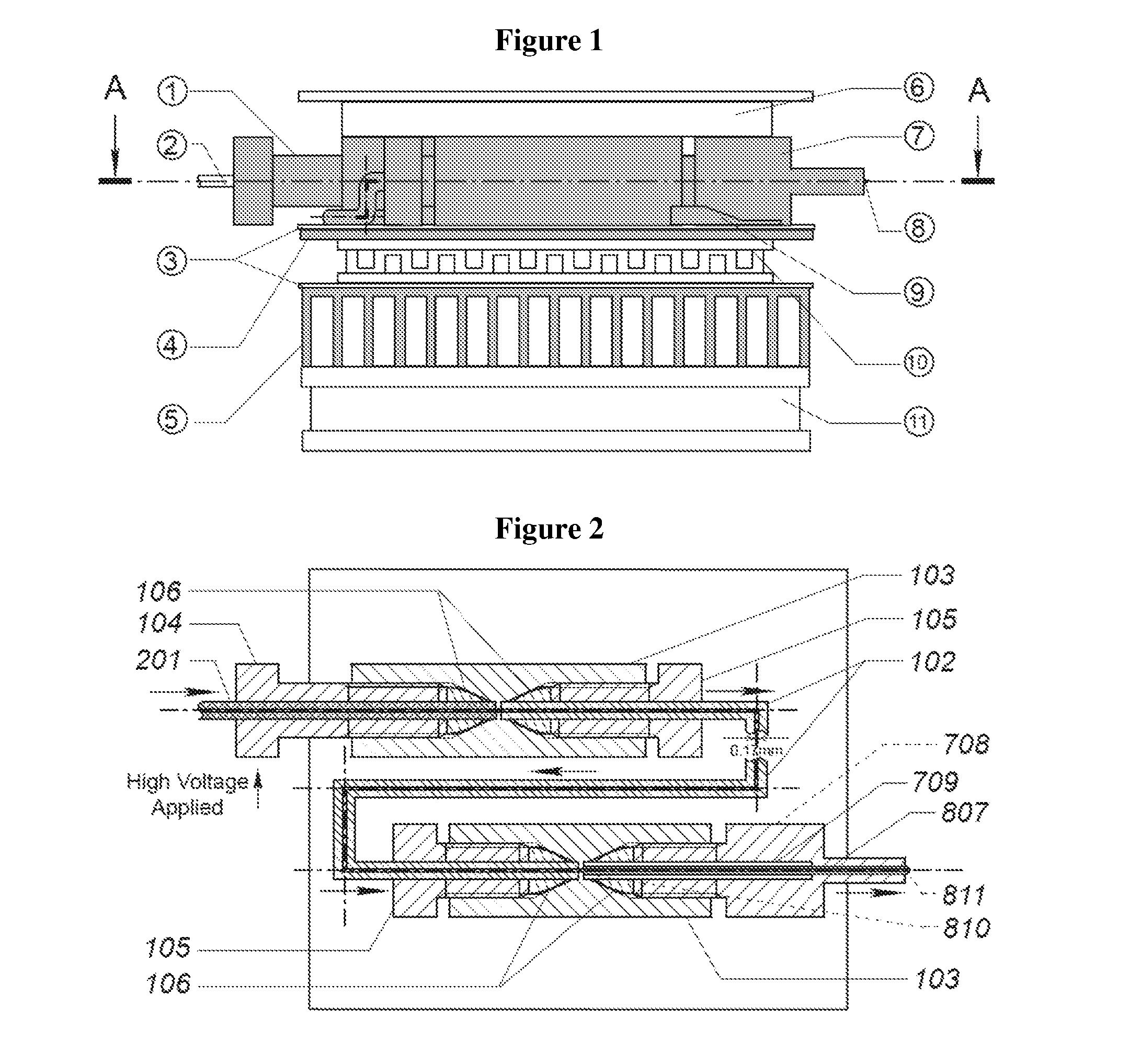Temperature-controlled electrospray ionization source and methods of use thereof
a technology of electrospray ionization and temperature control, which is applied in the direction of dispersed particle separation, lighting and heating apparatus, and separation processes, etc., can solve the problems of difficult to provide an accurate description difficult to produce distinct in process snap-shots, and difficult to achieve the detailed characterization of the aggregation process
- Summary
- Abstract
- Description
- Claims
- Application Information
AI Technical Summary
Benefits of technology
Problems solved by technology
Method used
Image
Examples
example 1
Precision of Detecting Reversible Changes in Biopolymer Higher Order Structure: Small Protein Unfolding
[0094]Accuracy of the new source vis-à-vis detection of reversible conformational changes in biopolymers was evaluated by comparing the melting temperatures obtained using temperature-controlled ESI MS and differential scanning calorimetry (DSC). These transitions also result in significant changes in heat capacity, enabling their detection by DSC.
[0095]Cytochrome c is a small protein with a covalently attached heme group, which is known to undergo reversible thermal denaturation. A DSC profile of cytochrome c reveals a single transition at 78±1° C. (FIG. 3). Monitoring the charge state distribution of cytochrome c ions in ESI MS using the same solution parameters as in DSC experiments suggests that the protein remains folded until the solution temperature is raised above 65° C., at which time the emergence of the high charge-density protein ions provides a clear indication that a ...
example 2
Precision of Detecting Reversible Changes in Biopolymer Higher Order Structure: Dissociation of a DNA Duplex
[0096]Monitoring ionic mass in ESI MS provides a very effective way to monitor the integrity of biopolymer assemblies. An example of a reversible heat-induced dissociation of a biopolymer assembly is presented in FIG. 4, where melting of a DNA duplex (made by annealing two complementary strands) is monitored over a 25-95° C. temperature range. Evolution of the fraction of singlet vs. total (singlet and duplex) DNA signal is used to calculate the transition mid-point as 64.9±2° C. DSC analysis of this DNA duplex carried out under the same conditions as ESI MS measurements (solvent composition and oligonucleotide concentration) yields melting temperature 66.4±1° C. (FIG. 4), which is within the experimental error of the value produced by ESI MS.
example 3
Heat-Induced Protein Aggregation: Probing Convoluted Irreversible Processes with Temperature-Controlled ESI MS
[0097]Following the validation of the new temperature-controlled ESI source with parallel DSC measurements, the new technique was applied to probe behavior of larger protein systems prone to aggregation. FIG. 5 shows a DSC profile of human glucocerebrosidase (GCase), a 63 kDa glycoprotein, which became a standard treatment of the Gaucher's disease. As is the case with all biopharmaceutical products, certain environmental factors may trigger GCase aggregation, a process that is of primary concern when stability, efficacy and safety of protein-based therapies are considered. Heat stress is frequently used to test protein instability; however, classical biophysical techniques that are commonly employed to detect the onset of GCase loss of stability in response to elevated temperature (such as fluorescence spectroscopy or DSC) do not provide a detailed description of this proces...
PUM
 Login to View More
Login to View More Abstract
Description
Claims
Application Information
 Login to View More
Login to View More - R&D
- Intellectual Property
- Life Sciences
- Materials
- Tech Scout
- Unparalleled Data Quality
- Higher Quality Content
- 60% Fewer Hallucinations
Browse by: Latest US Patents, China's latest patents, Technical Efficacy Thesaurus, Application Domain, Technology Topic, Popular Technical Reports.
© 2025 PatSnap. All rights reserved.Legal|Privacy policy|Modern Slavery Act Transparency Statement|Sitemap|About US| Contact US: help@patsnap.com



